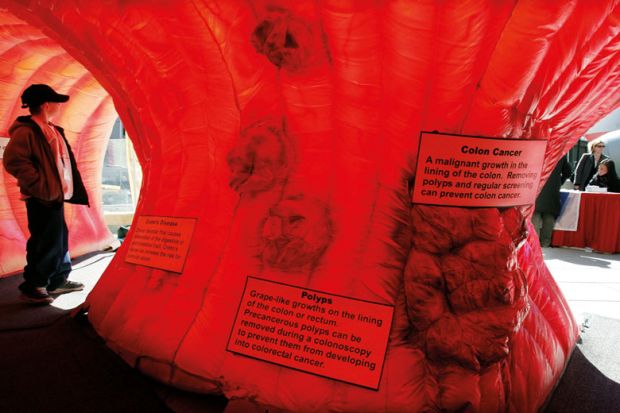Detecting cancer at its earliest stages saves lives, However, it is a notoriously difficult research challenge and an area that has historically suffered from underinvestment and a lack of direction.
However, in recent months, various global leaders, including Joe Biden and Boris Johnson, have signalled their intention to make cancer their priority, with early detection research and innovation a key component of their Covid-19 cancer recovery strategies.
Be in no doubt that there are brilliant minds working on this issue, but the real challenge is getting everyone on the same page – industry, academia, medical research charities and government.
Recently, Cancer Research UK convened the brightest minds in the field and published a major review in the journal Science, outlining five key challenges we need to meet if we are to deliver on the promise of early detection.
We need to develop a better understanding of the biology and prognosis of early cancer; improve how we determine the risk of developing cancer; develop better methods for finding and validating cancer detection biomarkers; make sure detection technologies are as accurate as they can be; and evaluate early detection approaches more systematically, to ensure they truly deliver patient benefit and are economically feasible to implement.
But there are major obstacles to overcome to meet these challenges.
The proportion of cancer research funding – from both funders of academic research and industry – dedicated to early detection remains disproportionately low, considering the potential health benefits. Put quite simply, the global health system doesn’t sufficiently value early detection. And the willingness to pay for detection technology is generally less than the willingness to pay for drugs, which further disincentivises R&D investment.
Insufficient resources for validation of markers and technologies are also a part of the reason most of them never make it to patients.
The long timelines of early detection research also necessitate a rethink of traditional models of funding to support early career researchers; the traditional three-year cycles of postdoctoral posts are often not enough to generate the outputs that are usually used to evaluate success.
Furthermore, the traditional siloed model that we use to train early career researchers does not support the integrated, multidisciplinary system we need. Too much of the research remains constrained within the borders of its own discipline – biomarker research, concerned with optimising sensitivity and specificity, or technology development, concerned with maximising the performance characteristics of their assay. Opportunities are missed to cross-compare (or even integrate) markers and technologies being developed in parallel.
Opportunities are also missed to better understand the real clinical context and problems that research is intended to address. We must consider more integrative models of training and development for researchers embarking on careers in early cancer detection. It could include allowing trainees exposure to discovery research and technology development and its evaluation and implementation along clinical pathways.
This would help trainees gain a better understanding of what it takes to move research towards health impact, and perhaps foster a greater entrepreneurialism – in turn accelerating the progress of validating and evaluating the potential of new technologies and approaches to early detection.
In short, researchers need to be encouraged to take the time to lift up their heads, look around and consider how what they are working on will work in the clinic, by asking questions such as “Could a doctor really use this biomarker or technology?” or “How will it fit in the health system and inform clinical decision-making?”
At Cancer Research UK, we refer to this as getting a “line of sight” to the clinic – keeping clinicians and patients in mind even in discovery research. Establishing that line of sight is a key theme of our Roadmap for cancer early detection and diagnosis.
The roadmap also emphasises how the financial incentives have to be right, to encourage and support more research and development in early detection. That means increased research funding from government and charities and also a clear economic model and potential return on investment that will incentivise industry and private equity investment.
We know there is political will to deliver early cancer detection like never before. It’s time to use that momentum to change how we do things.
David Crosby is head of prevention and early detection research at Cancer Research UK.
Register to continue
Why register?
- Registration is free and only takes a moment
- Once registered, you can read 3 articles a month
- Sign up for our newsletter
Subscribe
Or subscribe for unlimited access to:
- Unlimited access to news, views, insights & reviews
- Digital editions
- Digital access to THE’s university and college rankings analysis
Already registered or a current subscriber? Login








